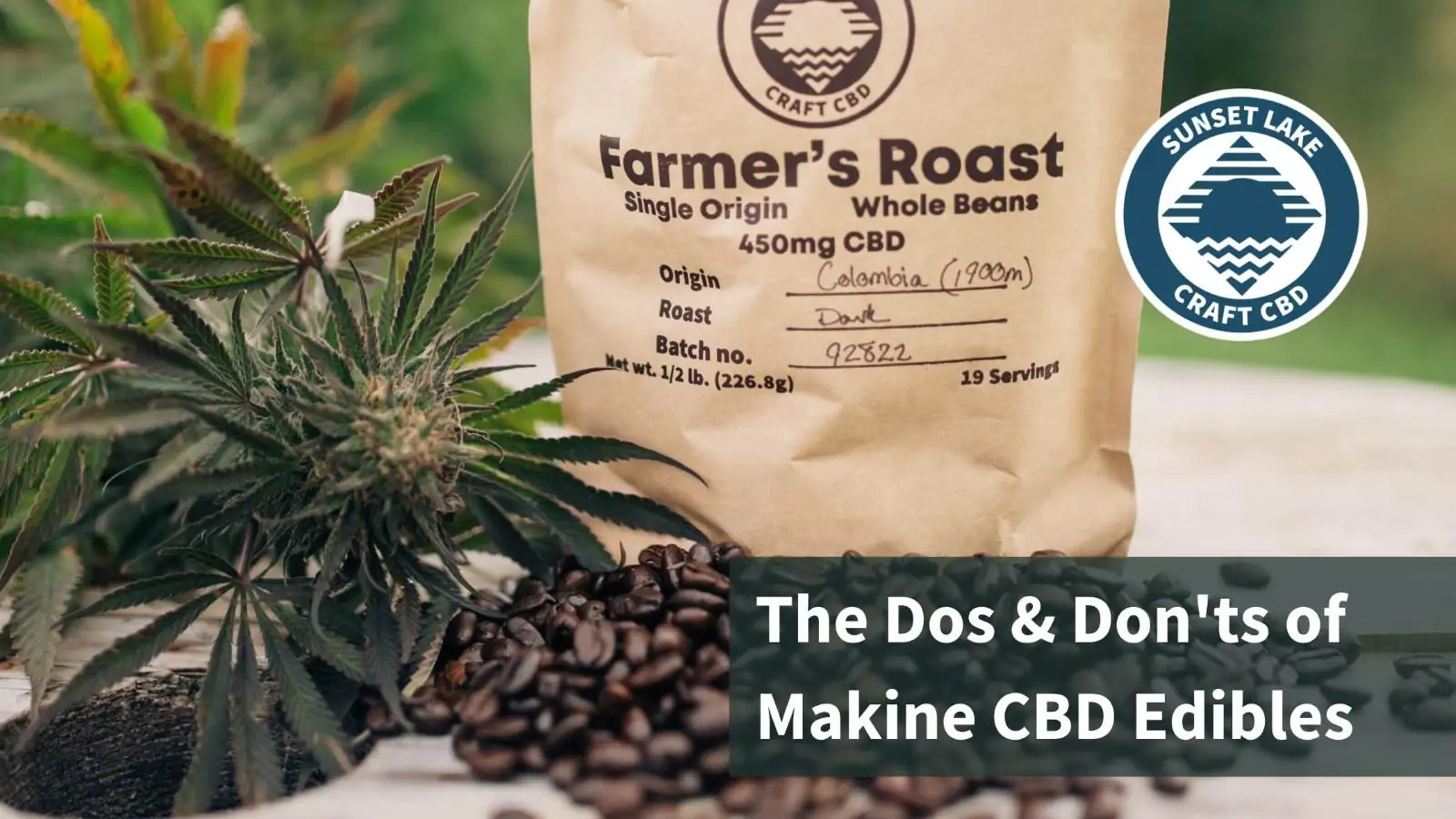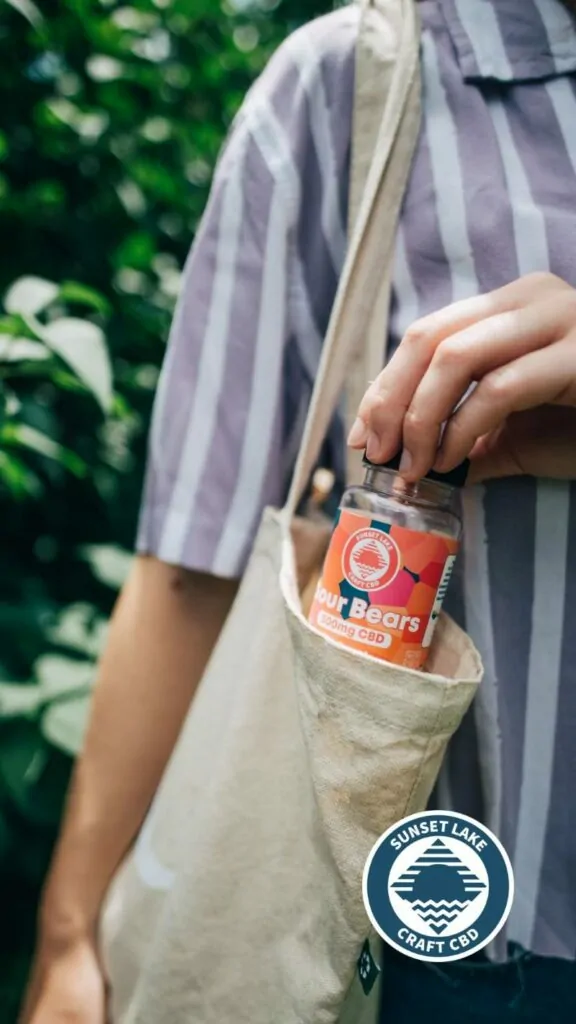No products in the cart.
The Dos & Don’ts of Making CBD Edibles

Let me just preface this post by saying that I am biased when it comes to CBD edibles. A good edible is my favorite way of taking CBD for a number of reasons.
- Are more accessible than other ingestion methods
- Last longer than any other ingestion method
- When prepared properly, they taste absolutely amazing
As someone who’s been making and perfecting their own recipes, I wanted to share some tips that I’ve picked up over the years. While it’s not exhaustive, the following list of dos and don’ts can help you make effective and tasty CBD edibles. But first, we should cover some of the basics.
What Are CBD Edibles?
CBD edibles are baked goods, candies, sugars, beverages, or any food that’s been infused with CBD. They can be formulated differently depending on what experience the manufacturer is trying to offer. For example, Sunset Lake CBD offers CBD-infused dark roast coffee beans meant to curb the morning jitters common with caffeine consumption. We also sell full-spectrum CBD Chocolate Fudge that’s a great before-bed treat.

CBD edibles are different than your average recreational cannabis edibles because they won’t contain significant amounts of edible THC. To be compliant with the 2018 Farm Bill, CBD edibles must contain less than 0.3% delta-9 THC on a weighted basis.
Many CBD edibles don’t contain any THC, meaning they are made with CBD isolate— a form of purified CBD. Sunset Lake CBD’s CBD Sour Gummy Bears are one such example.
Read more: Full-Spectrum Gummies vs. CBD Gummies
The Dos & Don’ts Of Making CBD Edibles
Don’t Fly Blind
So you have some CBD Hemp Flower and want to make some CBD edibles? How much are you going to use for your infusion? How much cooking fat should you use? Because cannabinoids are metabolized differently when you eat them compared to when you smoke or apply them topically, it’s important to be as precise with your dosages as possible. Don’t fly blind.
Use a Dosing Calculator
Making accurately dosed CBD edibles takes a bit of math and plugging in numbers. Luckily, the good folks over at Veriheal.com have created this free-to-use edible dosage calculator that can do most of the heavy lifting for us.
You’ll need a few things:
- A kitchen scale
- A conversion calculator for weights and measurements
- The certificate of analysis that came with your CBD hemp flower
- You may also want a regular calculator too
Read more: How to Read Your Certificate of Analysis
Using your certificate of analysis, you can figure out your flower’s potency and plug those directly into your edible dosage calculator. You’ll also want to convert the amount of fat (butter, oil, hemp oil, etc) in your recipe to the edible calculator’s units of measurement.
Once you know how much fat (in teaspoons) is called for in your recipe, the number of servings your recipe will make, and how much CBD per teaspoon your flower yields, it’s up to you to determine how many grams of CBD hemp flower you’ll want to use for infusion.
We at Sunset Lake CBD, always recommend starting with a 25mg dose of CBD. That includes homemade CBD edibles. Play around with the dosing calculator until you find that sweet spot.
Don’t Put Hemp Flower Directly into your CBD Edibles
I’m not ashamed to admit that this was my rookie edible-making mistake. One might think that you can treat your hemp flower like any other ingredient during the cooking process.
“A little shake in some brownies… what could go wrong?”
Throwing hemp directly into your edibles isn’t the worst mistake, but your edibles will be less potent, taste bad, and have a grainy texture.
Decarboxylate Your Hemp
Decarboxylation is the secret to making great homemade CBD edibles. Decarboxylation, or “decarb” for short, is the activation of CBDa (cannabidiolic acid) and when CBDa loses its carboxyl acid group via heat and becomes CBD. This is the most important step when making CBD edibles. If we don’t decarb our CBD hemp flower before infusion, our edibles won’t have any effect.
A Quick ‘How-to’ On Decarboxylation
Decarbing your hemp flower for CBD edibles: step by step.
- Preheat your oven to 230 degrees F
- Prepare a clean roasting pan. Line the bottom of the pan with parchment paper to make cleanup easier.
- Spread out your CBD flower evenly in the roasting pan.
- Cover the pan with tinfoil (not necessary, but helps cut down on smell and keeps the good terpenes in)
- Bake at 230F for one hour. (Warning: this step is quite pungent. Turn on your overhead exhaust— especially if you live in a shared space.)
- Don’t uncover the pan until it’s cool.
- Remove your CBD flower from the pan and pulverize it until it is an even brown shake. This can be done with a traditional grinder or a mortar and pestle.
- Your hemp flower is ready for infusion
Use High-Quality Fats for Your Infusion
Using better ingredients means better food. The same is true for edibles. If you want your CBD edibles to be effective and taste good, you should use high-quality fats like avocado oil, or unsalted butter from grass-fed cows. Not all fats are made the same. Some are better at “latching” on to CBD than others.
The best fats to infuse with CBD are:
- Butter – 93% infusion rate
- Avocado oil- 92%
- MCT (Medium-Chain Triglyceride) oil – 91%
- This stable and flavorless oil is what we make our full-spectrum CBD oil tinctures with
- Coconut oil- 82%
Some of the above oils taste better than others in certain dishes. Plan accordingly!
Don’t Burn the CBD
I’m not ashamed to admit I’ve done this before. After a by-the-book infusion, I tried to use my CBD-infused butter in a recipe that called for baking at 400 degrees Fahrenheit. What a tragic result.
At temperatures over 356F, CBD breaks down. You’ll want to stick with recipes that call for baking at 350 degrees or lower in order to protect the integrity of your CBD. Note that if you’re planning on making CBN edibles, you should keep your recipes below 365F.
Don’t Eat On an Empty Stomach
You’ll be tempted to dig into your CBD edibles once they’re done. By all means, do, but make sure that you’re eating some non-infused food beforehand.
CBD edibles, and cannabis-infused candies and foods in general, work better and are more pleasant when you eat them after a meal.
Wait for Your CBD Edibles to Kick In
Because edible CBD is metabolized and digested at a different pace than other ingestion methods, you may not notice them kick in right away. Generally, the average CBD edible consumer will start to feel the effects anywhere between 45-120 minutes.
CBD edibles also don’t stop kicking in for quite some time. Unless you want to end up taking a three-hour nap, it’s important to pace yourself.
Share!
Not much of a tip. But definitely do this! Time to make your own CBD edibles!
